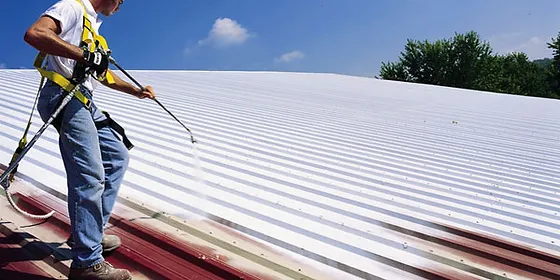Metal roofs are a popular choice for homeowners due to their durability, longevity, and aesthetic appeal. However, over time, metal roofs may show signs of wear and tear, including rust, fading paint, and leaks. This restoration is a cost-effective and sustainable solution to breathe new life into your roof. In this article, we will explore the benefits and process of metal roof restoration, helping you restore the beauty and performance of your roof.

The Benefits:
Extends the Lifespan: Metal roof restoration can significantly extend the lifespan of your roof. By addressing rust, corrosion, sealing leaks, and recoating the surface, you can prevent further deterioration and protect the underlying structure. A properly restored metal roof can last for several additional decades.
Cost-Effective Alternative to Replacement: This restoration is a cost-effective alternative to a full roof replacement. The restoration process involves repairing and revitalizing the existing roof, saving you the expense of installing a brand-new roof. Restoring your metal roof can provide significant cost savings while still delivering excellent performance and aesthetics.
Enhanced Energy Efficiency: During the restoration process, a reflective coating is often applied to the metal roof. This coating helps to reflect sunlight and reduce heat absorption, improving the energy efficiency of your home. A cooler roof surface can result in lower cooling costs during hot summer months, making metal roof restoration an eco-friendly choice.
Improved Aesthetics: Over time, metal roofs can lose their original luster due to fading paint and weathering. Metal roof restoration involves cleaning the surface, repairing any damage, and applying a fresh coat of paint or protective coating. This revitalizes the appearance of your roof, enhancing the curb appeal and value of your home.
The Process:
Inspection and Preparation: The restoration process begins with a thorough inspection of the metal roof to assess its condition and identify any areas that require attention. This includes checking for rust, leaks, loose screws, and damaged flashing. Once the necessary repairs are identified, the roof is thoroughly cleaned to remove dirt, debris, and any loose paint or coatings.
Rust Treatment and Repair: If rust is present on the metal roof, it is crucial to address it before proceeding with the restoration. The rusted areas are typically treated with a rust converter or primer to stop the corrosion process. Any damaged or deteriorated metal panels or flashing are replaced or repaired to ensure a strong and watertight roof surface.
Surface Coating and Protection: Once the roof is clean, repaired, and rust-treated, a protective coating is applied to the metal surface. This coating serves as a barrier against moisture, UV rays, and other environmental factors that can cause damage. Reflective coatings are often used to enhance energy efficiency, reduce heat absorption, and minimize the expansion and contraction of the metal.
Final Touches and Inspection: After drying the coating, a final inspection ensures the completion of the restoration process and verifies the roof’s optimal condition. The restored metal roof is now ready to provide long-lasting protection and beauty to your home.
Conclusion:
Metal roof restoration is a practical and sustainable solution to revive the performance and appearance of your aging metal roof. This restoration offers numerous benefits, including extending lifespan, cost savings, improved energy efficiency, and enhanced aesthetics. If your metal roof shows signs of wear, consult a professional roofing contractor for assessment and restoration options. With proper restoration, your metal roof can continue to protect your home for many more years to come.



Leave a Reply